Proper post-operative care is essential for healing and preventing complications after tooth extraction. Following instructions ensures the formation of a blood clot, protecting the extraction site, and avoiding activities that could disturb it. Maintaining hygiene, managing pain, and monitoring for signs of infection are crucial for a smooth recovery. Gauze placement, saline rinses, and dietary adjustments support the healing process, while avoiding smoking and alcohol helps prevent complications. Adhering to these guidelines promotes faster recovery and long-term oral health.
Importance of Following Instructions
Adhering to post-operative care instructions is crucial for preventing complications and promoting healing. Following these guidelines protects the extraction site, maintains the blood clot, and reduces the risk of dry socket or infection. This ensures a smooth and faster recovery, allowing you to return to normal activities quickly. Proper care minimizes discomfort and supports long-term oral health effectively.
General Expectations During Recovery
After tooth extraction, recovery typically progresses smoothly. Patients may experience mild swelling, discomfort, and slight bleeding, which are normal. Adhering to post-operative instructions is crucial to prevent complications and ensure proper healing. Avoiding strenuous activities and smoking helps protect the extraction site. Monitoring for signs of infection or excessive bleeding is essential for a successful recovery.

Immediate Post-Operative Care
Place gauze firmly over the extraction site to control bleeding. Bite gently for 30-45 minutes. Avoid strenuous activities, smoking, and alcohol to protect the site.
Bleeding Management
Place gauze firmly over the extraction site and bite gently for 30-45 minutes to control bleeding. If bleeding persists, replace the gauze or use a tea bag. Minor bleeding is normal, possibly lasting a few hours. Avoid vigorous activities, as they can dislodge the clot. If bleeding is heavy or uncontrollable, contact your dentist immediately for assistance.
Protecting the Extraction Site
Avoid disturbing the blood clot at the extraction site, as it aids healing. Do not use straws, spit, or touch the area. If bleeding occurs, apply gauze or a tea bag firmly. Keep the site clean with saline rinses starting the next day. Avoid smoking and alcohol, as they can dislodge the clot. Maintain a soft diet and avoid hot foods initially to protect the area and promote proper healing.
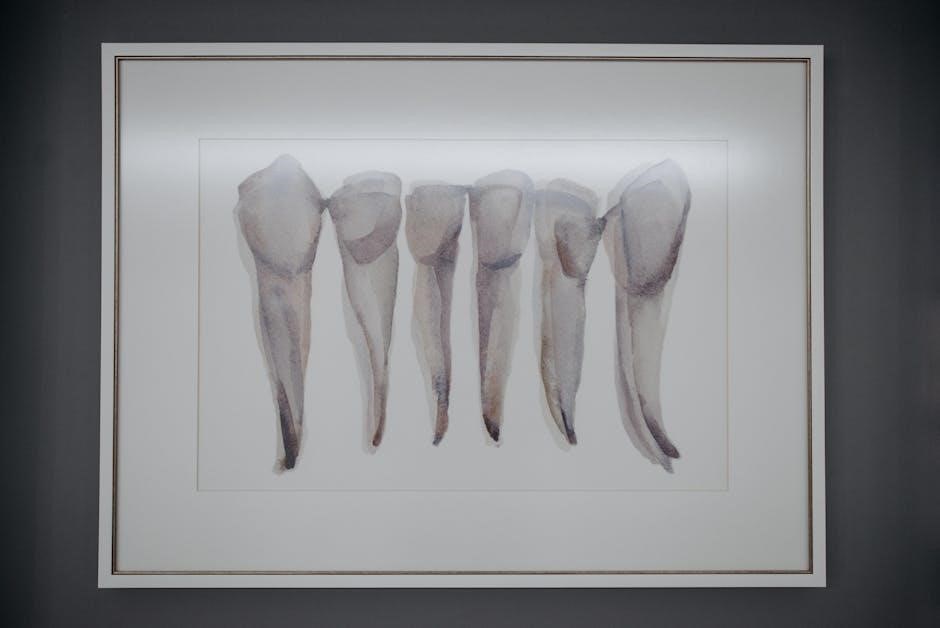
Dietary Recommendations
Eat soft foods like yogurt and mashed potatoes, avoiding hot, sharp, or hard foods. Avoid alcohol and carbonated beverages to prevent dislodging the blood clot and promote healing.
Soft Foods to Eat After Extraction
Opt for soft, non-irritating foods like yogurt, scrambled eggs, mashed potatoes, and soft-cooked pasta. Avoid hot, spicy, or sharp foods that could disrupt the healing process. Cold soups, smoothies, and applesauce are also ideal. These foods are gentle on the extraction site, reducing discomfort and promoting healing without dislodging the blood clot. Stick to a soft diet for the first few days to support recovery and minimize irritation.
Foods to Avoid During Recovery
Foods to Avoid During Recovery
Avoid hard, crunchy, or sharp foods like nuts, chips, and raw vegetables, as they can irritate the extraction site. Refrain from hot, spicy, or acidic foods that may cause discomfort. Do not consume alcohol or carbonated beverages, as they can delay healing. Skip sticky foods like caramel or toffee, which may dislodge the clot. Avoid chewing on the extraction side and steer clear of straws to prevent dislodging the blood clot.
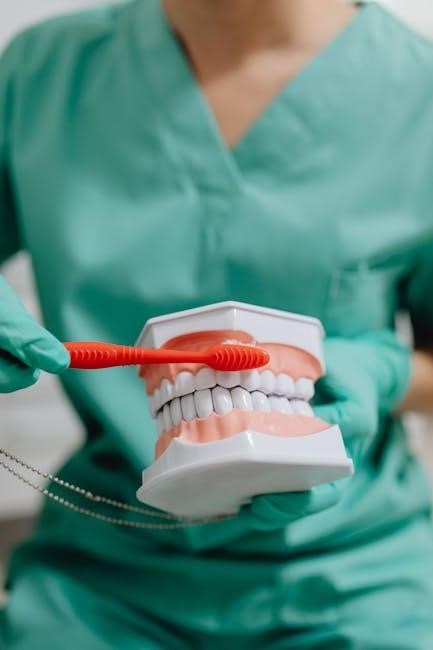
Oral Hygiene Practices
Resume brushing gently 24 hours post-extraction, avoiding the extraction site. Use saline rinses to keep the area clean, promoting healing without dislodging the clot.
When to Resume Brushing and Flossing
Resume gentle brushing 24 hours after extraction, avoiding the extraction site. Floss carefully around the area to maintain hygiene without disrupting the healing process. Use saline water for rinsing to clean the site without dislodging the clot, ensuring proper healing and preventing complications.
Saline Water Rinses for Healing
Start saline rinses 24 hours after extraction to promote healing. Mix 1-2 teaspoons of salt in warm water, swirl gently, and rinse the extraction site. Repeat after meals to remove debris and bacteria, reducing swelling and preventing infection. Avoid vigorous rinsing to protect the clot and ensure proper tissue repair. This practice supports a clean environment for optimal recovery and minimizes the risk of complications. Continue rinsing until healing is complete.
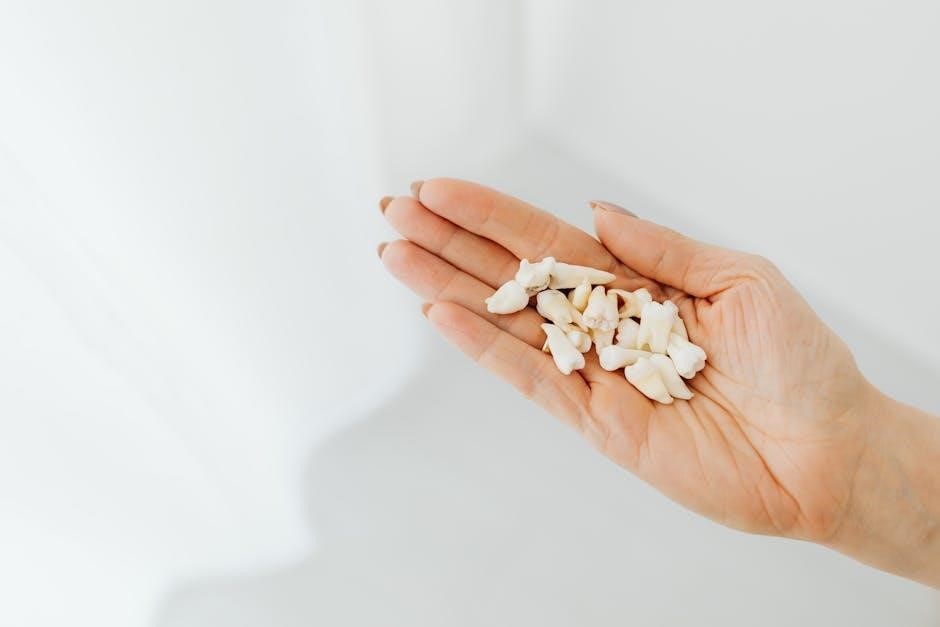
Pain and Discomfort Management
Start saline rinses 24 hours post-extraction to aid healing. Mix 1-2 teaspoons of salt in warm water, swish gently, and rinse the site after meals. This reduces bacteria, swelling, and infection risk. Avoid vigorous rinsing to protect the clot. Continue until fully healed to maintain cleanliness and promote tissue repair, ensuring a smooth recovery process and minimizing complications.
Medications to Use for Pain Relief
For managing pain after tooth extraction, over-the-counter pain relievers like ibuprofen or acetaminophen are recommended. Prescription medications may also be provided by your dentist. Always follow the dosage instructions carefully. Start taking pain medication as soon as the numbness wears off to stay ahead of discomfort. Continue as directed to manage pain effectively and promote a comfortable recovery. Avoid combining medications without professional advice to ensure safety and efficacy.
Monitoring for Signs of Infection
Monitor for signs of infection, such as increased swelling, redness, or pain at the extraction site. Watch for fever, pus, or a foul odor from the wound. If you experience severe pain, difficulty swallowing, or spreading redness, contact your dentist immediately. Early detection of infection is crucial for timely treatment and preventing complications. Maintain good oral hygiene and follow post-operative care instructions to reduce infection risks and ensure proper healing.
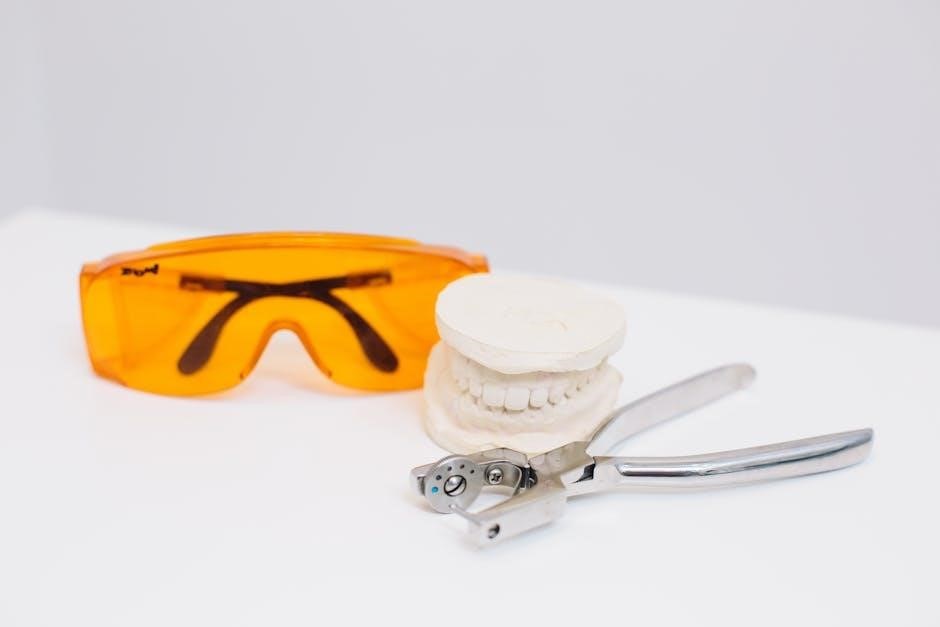
Follow-Up Care
When to Visit the Dentist for a Check-Up
It is essential to schedule a follow-up appointment with your dentist within a few days after the extraction to ensure proper healing. During this visit, the dentist will evaluate the healing progress, remove any stitches if necessary, and address any concerns or complications. Regular check-ups help confirm that the extraction site is healing correctly and allow for early detection of potential issues. Adhering to your dentist’s recommendations ensures a smooth recovery and maintains long-term oral health.
Removing Stitches if Necessary
If stitches were placed during your tooth extraction, they are typically removed 7-10 days after the procedure. Your dentist will schedule a follow-up appointment to safely remove them. Avoid pulling or disturbing the stitches, as this can lead to complications. In some cases, dissolvable stitches may be used, eliminating the need for removal. Always follow your dentist’s instructions to ensure proper healing and prevent issues like dry socket or infection.

Common Complications to Watch For
Watch for swelling, severe pain, or delayed healing, which may indicate complications. Contact your dentist immediately if you experience unusual symptoms or prolonged discomfort after extraction.
Signs of Dry Socket or Infection
Be alert to severe pain, swelling, or bad breath, which may indicate a dry socket or infection. Look for loss of the blood clot, visible bone, or delayed healing. If you experience fever, redness, or pus, contact your dentist immediately. These symptoms suggest complications needing professional attention to prevent further issues and ensure proper recovery.
Excessive Bleeding or Swelling
If bleeding persists beyond 24 hours or soaks more than 2 gauzes per hour, seek immediate attention. Swelling may increase in the first 24-48 hours but should subside afterward. Apply ice packs to reduce swelling. If swelling worsens or is accompanied by fever or pain, contact your dentist promptly. Excessive bleeding or swelling may indicate complications needing professional intervention to ensure proper healing and prevent further issues.
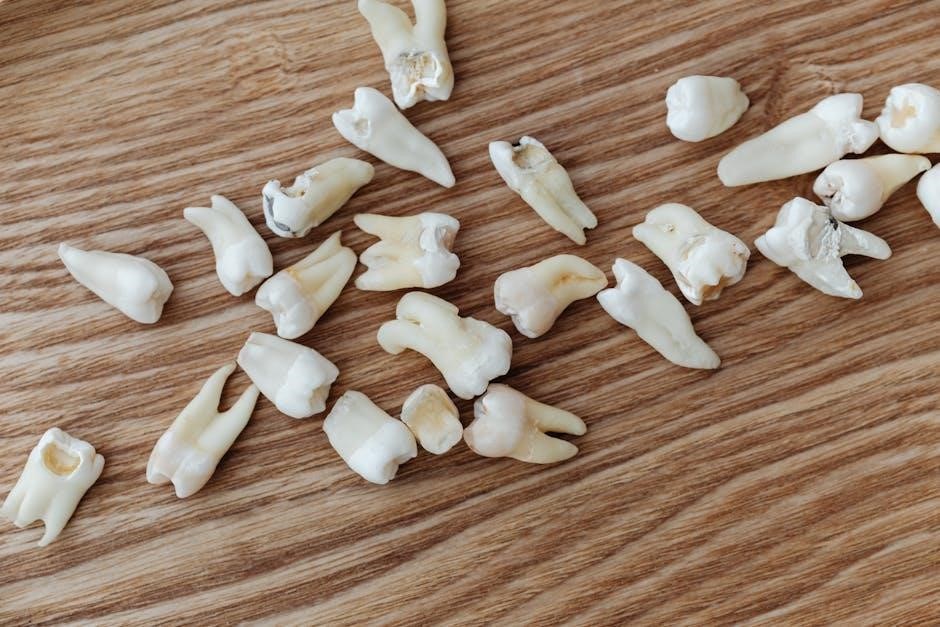
Lifestyle Adjustments During Recovery
Rest is crucial during the initial days post-extraction. Avoid strenuous activities, smoking, and alcohol consumption, as they can hinder healing and increase complications. These adjustments promote recovery.
Rest and Avoiding Physical Activity
Rest is vital for recovery. Elevate your head slightly while resting to reduce swelling. Avoid strenuous activities, bending, or heavy lifting for 24-48 hours. Refrain from exercise or physical exertion, as it may dislodge the blood clot or worsen bleeding; Limiting movement helps protect the extraction site and promotes healing. Resume normal activities gradually, ensuring the site is stable and healing progress is maintained.
Smoking and Alcohol Consumption Restrictions
Smoking and alcohol consumption should be avoided for at least 24 hours after tooth extraction. Smoking can dislodge the blood clot, leading to dry socket or infection. Alcohol irritates the extraction site, slowing healing and increasing infection risk. Avoiding these activities ensures proper clot formation and supports a smooth recovery. Resuming smoking or alcohol too soon can prolong healing and complicate the recovery process.
Proper post-operative care ensures a smooth recovery and prevents complications. Follow instructions, maintain hygiene, and avoid smoking and alcohol to promote healing. Monitor for signs of infection and attend follow-up appointments for optimal oral health.
Ensuring Proper Healing
To ensure proper healing, protect the extraction site by avoiding disruptive activities and smoking. Use saline rinses to keep the area clean and promote clot formation. Maintain a soft diet, avoid alcohol, and attend follow-up appointments. Monitor for signs of infection, such as swelling or pus, and contact your dentist if concerns arise. Proper care supports tissue repair and prevents complications, ensuring a smooth recovery and maintaining long-term oral health.
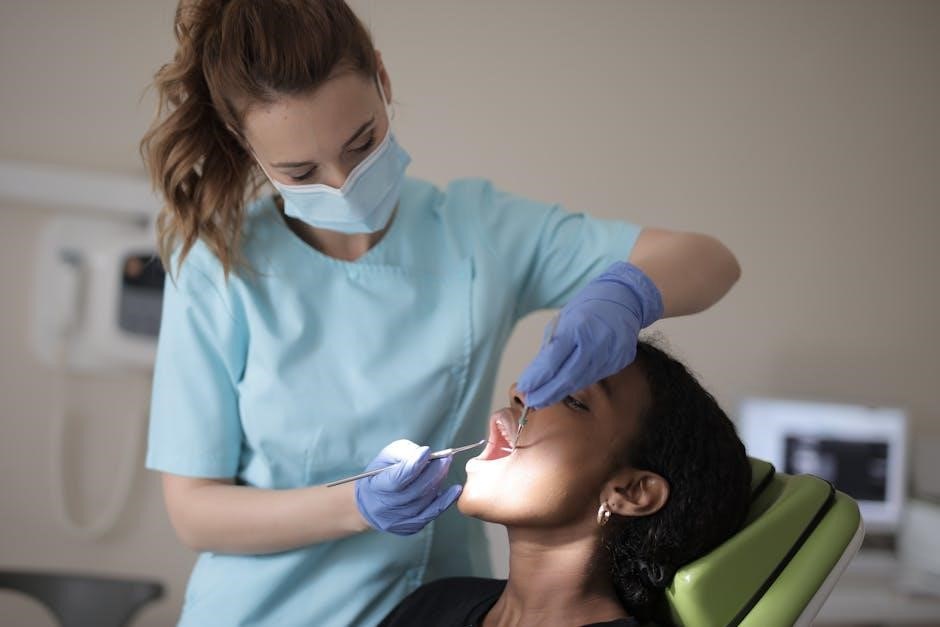
Long-Term Oral Health After Extraction

Maintaining proper dental hygiene and attending regular check-ups ensures long-term oral health after extraction. Avoiding smoking and alcohol prevents complications and supports healing. Over time, the jawbone may resorb, affecting adjacent teeth and facial structure. Considering dental implants can restore function and aesthetics, preserving your smile. Proper care and follow-ups with your dentist are essential for a healthy outcome and overall well-being.